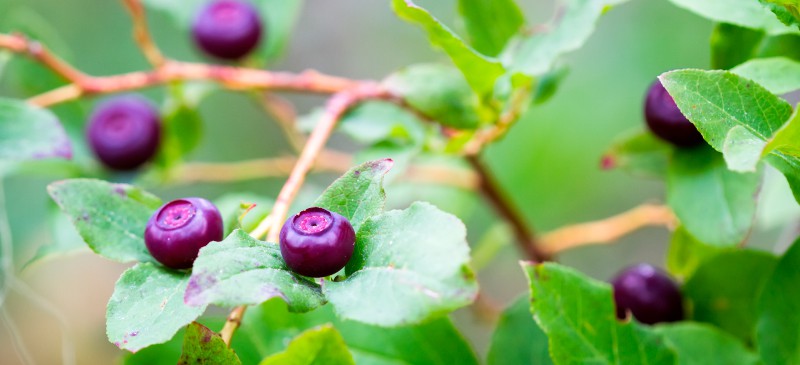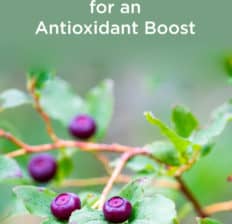This Dr. Axe content is medically reviewed or fact checked to ensure factually accurate information.
With strict editorial sourcing guidelines, we only link to academic research institutions, reputable media sites and, when research is available, medically peer-reviewed studies. Note that the numbers in parentheses (1, 2, etc.) are clickable links to these studies.
The information in our articles is NOT intended to replace a one-on-one relationship with a qualified health care professional and is not intended as medical advice.
This article is based on scientific evidence, written by experts and fact checked by our trained editorial staff. Note that the numbers in parentheses (1, 2, etc.) are clickable links to medically peer-reviewed studies.
Our team includes licensed nutritionists and dietitians, certified health education specialists, as well as certified strength and conditioning specialists, personal trainers and corrective exercise specialists. Our team aims to be not only thorough with its research, but also objective and unbiased.
The information in our articles is NOT intended to replace a one-on-one relationship with a qualified health care professional and is not intended as medical advice.
What Is a Huckleberry? The Surprising Immune-Boosting Benefits of Huckleberries
July 18, 2021

If you ever spend time hiking or foraging in the woods in places such as the eastern United States or Canada, you may come across several types of wild berry shrubs that look similar. For example, huckleberry, blueberry and bilberry shrubs all closely resemble one another.
Huckleberries might not be as widely available or popular as their cousin berries, but they’re still highly nutritious.
Can you eat huckleberries? You sure can, and there’s good reason to if you have access to them considering they are full of antioxidants and nutrients like vitamin C.
Did you know that the huckleberry is actually the state fruit of Idaho, commonly used to make jams and desserts like pies? That’s not all.
Let’s look closer at the health benefits of huckleberries and how to grow and use them at home.
What Is a Huckleberry?
Huckleberries are small blue berries that look very similar to blueberries (and bilberries too, a lesser known type of wild berry).
The huckleberry shrub is a member of the Ericaceae plant family. The two genus of huckleberries that are most often grown and consumed are Gaylussacia and Vaccinium.
Huckleberries grow in many parts of the world and in a variety of climates. They can be found growing throughout the eastern half of North America, throughout Montana, the Andes Mountains and in southeastern Brazil.
When looking at huckleberry leaves, you’ll notice that some types have leaves that produce resin, a viscous substance that contains protective compounds that defend the leaves against damage. The leaves can also be waxy or hairy.
The biggest difference between Vaccinium and Gaylussacia huckleberry plants is their flowers. Vaccinium flowers have five chambers, while Gaylussacia flowers have 10 chambers.
Otherwise the two are nearly identical. The flowers tend to grow in clusters and can be greenish, red, white or pink.
Within the two larger genus of huckleberries are several distinct species, including:
- the common huckleberry (G. baccata) of the eastern United States and Canada
- the dwarf huckleberry (G. dumosa), which is found in Florida
- the box huckleberry (G. brachycera), which is native to the eastern and central United States
In case you’re wondering, the actual berries called huckleberries are unrelated to the saying that someone “is your huckleberry.”
What does it mean when you call someone a “huckleberry”? The saying comes from famous author Mark Twain’s Huckleberry Finn character and means that someone is just the right person for a given job — or a significant person or nice person.
Nutrition
Like other berries, huckleberries are rich sources of vitamins A, B vitamins and vitamin C, as well as various antioxidants.
Research shows that huckleberry has a very high phytochemical content, especially the antioxidants called anthocyanin and polyphenols.
One study found that huckleberries contain up to 15 anthocyanins, including
- galactoside
- glucoside
- arabinoside of delphinidin
- cyanidin
- petunidin
- peonidin
- malvidin
The darker blue- and purple-colored varieties seem to be especially rich in these antioxidants.
Within various berries in the of the Vaccinium genus, you’ll also find the compound called pterostilbene. Pterostillbene is a dimethylated derivative of resveratrol, an antioxidant that helps fight free radical damage.
It’s present in darkly colored berries and their juices and extracts. These include
- huckleberry
- cranberry
- bilberry or whortleberry
- lingonberry or cowberry
- blueberry
Additionally, studies show that within these berries there are beneficial organic acids, sugars/carbohydrates, fibers and other phenolic compounds with nutritional and functional properties.
100 grams of huckleberries contain about:
- 37 calories
- 8.7 grams carbohydrates
- 0.4 grams protein
- 0.1 grams fat
- 2.8 milligrams vitamin C (5 percent DV)
- 79 international units vitamin A (2 percent DV)
- 0.3 milligrams iron (2 percent DV)
Huckleberry nutrition also contains B vitamins and calcium.
What does huckleberry taste like?
This fruit is often described as mildly tart but also sweet, similar to the taste of blueberries.
Huckleberries also contain noticeably larger, bitter seeds compared to blueberries. This changes their texture.
Otherwise the taste is comparable.
Benefits
Huckleberries were traditionally collected by Native American early settlers along the Pacific Coast, interior British Columbia, Idaho and Montana. Not only were they consumed as food, but they had applications in traditional medicine too, including helping treat inflammation, pain, heart ailments and infections.
Here’s more about the benefits of huckleberry nutrition:
1. Very High in Antioxidants
Based on their ORAC score, which indicates the concentration of antioxidants within a food, huckleberries and related berries in the same Vaccinium family are some of the richest sources of protective compounds among nearly all foods.
Including foods rich in polyphenols and anthocyanins in your diet is linked with anti-aging benefits, protection against oxidative stress and free radical damage, anti-cancer effects, and more. Berries in general can help defend against many chronic diseases and are even linked with longevity.
2. Can Help Protect Heart Health
Fruits and veggies that are high in polyphenols and other phytonutrients can help fight heart disease, promote healthy cholesterol levels, reduce inflammation, lower risk for vascular diseases and promote arterial health.
These berries also help regulate blood pressure levels, in addition to other benefits for digestive, nerve and muscular functions.
3. Supports Immune Function
Huckleberry provides a high amount of vitamin C.
Vitamin C is also needed for synthesis of collagen protein. Collagen is a structure protein that promotes a healthy gut lining (where the majority of the immune system if found) as well as healthy joints and skin.
4. Can Protect the Eyes and Skin
As an excellent source of vitamins C and A/beta-carotene, huckleberries are great for promoting skin and eye health. They can help stave off macular degeneration and damage to the eyes that can lead to vision loss and reduce sun damage to the skin.
Antioxidants also help promote skin cell turnovers and can keep skin looking more youthful with age.
5. Provides Nutrients that Promote Metabolic Health
In addition to providing vitamins and antioxidants, huckleberries contain a decent amount of B vitamins and iron. The body uses those for metabolic processes and to build new red blood cells and prevent fatigue.
Consuming huckleberry can contribute to healthy cognitive, nerve and muscular functions and may reduce the risk for iron deficiency anemia.
Huckleberry vs. Blueberry
Are huckleberries the same as blueberries? Not quite.
The two are related and within the same family — however they grow differently. Huckleberries grow in minor clusters, while blueberries grow in bigger clusters.
Blueberries are also white inside, while huckleberries are either deep purple or red inside.
A quick way to find out if berries are either blueberries or huckleberries is to smash the berries between your fingers. Blueberries have a soft inside and are full of soft seeds, while huckleberries have larger seeds that give the berries a slight crunch.
How to Use (Recipes)
With a fruity and sweet taste, these berries can be eaten both fresh or cooked, as well as preserved.
Some of the most popular ways to use these berries include making huckleberry jam and pie filling. You can basically use them in the same ways you would blueberries, such as in oatmeal, muffins, pancakes, etc.
Other ideas include making frozen berries as healthy treats, fruit leathers, berry ice cream, syrup and dried huckleberry “raisins.”
Here are some huckleberry recipes to try, using this berry in place of others or in addition to others:
If you’d like to grow these berries in your yard, plant them somewhere with acidic and moist soil. The soil needs to be well-drained with a good mix of shade and sunlight.
Plant the shrubs about three to five feet apart. Once matured, they should reach about three to six feet tall.
Bloom time for huckleberries is between April and May in most locations. The berries are sweetest and ready to be harvested typically between July and August.
Risks and Side Effects
If you have an allergy to blueberries, bilberries or cranberries, be very careful about consuming huckleberries. Avoid eating them if you experience any side effects, like tingling in your mouth, indigestion or hives.
Conclusion
- A huckleberry is a small blue berry that looks very similar to blueberries.
- The huckleberry shrub is a member of the Ericaceae plant family. The two genus of huckleberries that are most often grown and consumed are Gaylussacia and Vaccinium.
- These fruits are edible both fresh and cooked.
- They are rich in nutrients like vitamins C and A and antioxidants, such as polyphenols and anthocyanins.
- Benefits of adding them to your diet include help fighting inflammation and oxidative stress, boosting skin health, and supporting heart and brain health.




